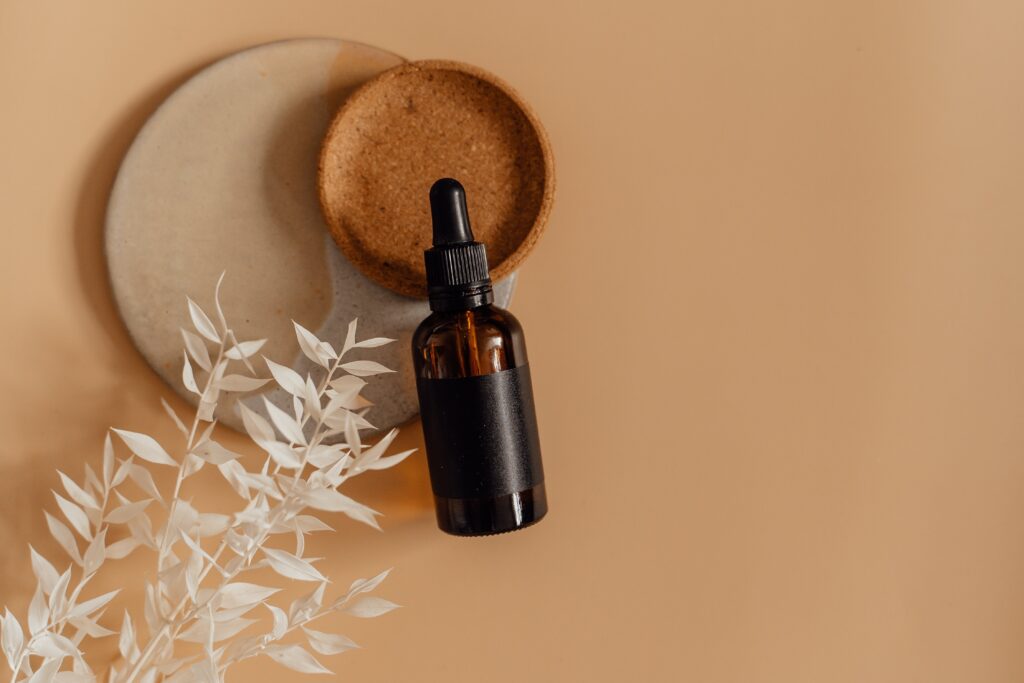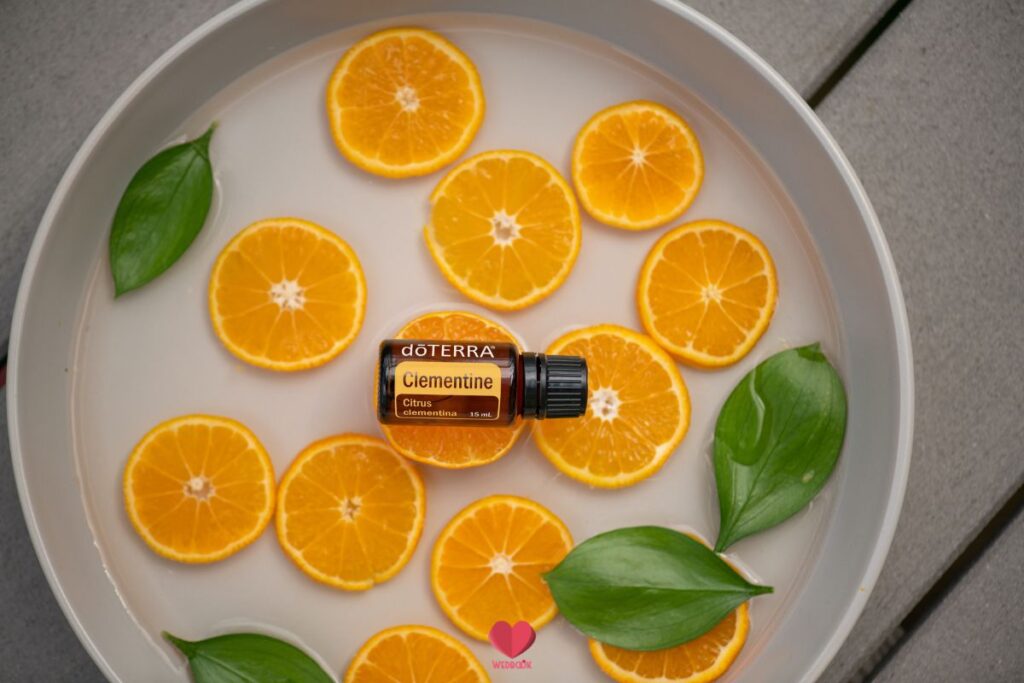Pain and inflammation can be debilitating, affecting our quality of life and limiting our ability to do the things we love. While there are many over-the-counter and prescription medications available to help manage these symptoms, some people prefer natural remedies. Essential oils, derived from plants, have been used for centuries for their therapeutic properties. When used properly, they can be a safe and effective way to help alleviate pain and reduce inflammation. In this article, we’ll explore some essential oil recipe for pain and inflammation that you can try at home.
#1 Essential Oil Recipe For Joint Pain And Inflammation
Recipe:
- 2 Ounces of Almond Oil (Buy Here)
- 1 Tablespoon of Jojoba Oil (Buy Here)
- 14 Drops of Eucalyptus Essential Oil (Buy Here)
- 14 Drops of Sweet Marjoram Essential Oil (Buy Here)
- 7 Drops of Lavender Essential Oil (Buy Here)
- 7 Drops of Peppermint Essential Oil (Buy Here)
- 7 Drops of Rosemary Essential Oil (Buy Here)
How To Use:
Mix all the essential oils together with the carrier oils to create a smooth blend. Pour this essential oil recipe for pain and inflammation into a dark bottle and store it away from direct sunlight. To use, apply a small amount of the oil to the affected joint(s) and massage gently for a few minutes. Shake the bottle well before use.
Why It Works:
This one of the essential oil recipes for joint pain and inflammation works because of its powerful blend of carrier and essential oils. Both almond oil and jojoba oil are deeply moisturizing and are full of nutrients like Vitamin E and fatty acids, which are very beneficial in strengthening your bones. Coming to the blend of essential oils in this recipe for joint pain and inflammation, research has proven eucalyptus oil to ease knee and other joint pain. Even inhalation of this oil through a steamer or diffuser can help with your arthritic pain. In fact, many over-the-counter creams contain this oil.
Sweet marjoram oil contains compounds that have anti-inflammatory and analgesic properties, such as terpinen-4-ol, which has been shown to have anti-inflammatory effects. Further, it may also have a warming effect on the body, which can help to improve circulation and reduce muscle tension in the affected area. Both lavender and peppermint also have strong pain-relieving and anti-inflammatory properties, while rosemary oil contains compounds such as camphor, 1,8-cineole, and α-pinene that have been shown to reduce the levels of pain-causing chemicals in the body and blocking the production of pro-inflammatory cytokines.
#2 Essential Oil Recipe For Muscle Pain And Inflammation
Recipe:
- 1 oz of Any Carrier Oil
- 5 Drops of Sweet Birch Essential Oil (Buy Here)
- 5 Drops of Basil Essential Oil (Buy Here)
- 5 Drops of Black Pepper Essential Oil (Buy Here)
How To Use:
To make the blend, mix the essential oils and carrier oil in a small glass bottle and shake well to combine. You can adjust the quantities of each oil depending on your personal preference, but be sure to keep the total amount of essential oils to no more than 15 drops per 1 oz of carrier oil. To use, apply a small amount of the blend to the affected area and massage gently into the skin. You can also use this blend for a soothing massage or add a few drops to a warm bath for a relaxing soak. Always remember to do a patch test before use and discontinue if any irritation occurs.
Why It Works:
This essential oil recipe for muscle pain and inflammation contains sweet birch essential oil, whose main constituent is methyl salicylate, a compound that has a similar structure to aspirin, which makes it a super pain reliever with an aromatic scent. When inhaled, it can calm your nerves and promote sleep, which can be difficult when you’re suffering from any sort of pain and inflammation. The next ingredient in the recipe is basil essential oil containing a variety of compounds, including eugenol, linalool, and methyl chavicol, which have analgesic and anti-inflammatory properties.
Black pepper essential oil contains a compound called piperine proven to have anti-inflammatory and analgesic properties. This compound helps to reduce inflammation and alleviate pain by inhibiting the production of pro-inflammatory cytokines and other inflammatory mediators in the body. Further, black pepper essential oil contains other compounds such as limonene and beta-caryophyllene that also have anti-inflammatory effects. These properties make black pepper essential oil an effective natural remedy for muscle pain and inflammation
P.S.: It is important to note that all these oils are very strong and potent and shouldn’t be used more than the recommended dosage. In fact, you can use a smaller dosage to test if that works for you and go ahead with it, but it should never be the other way around.
#3 Essential Oil Recipe For Pain And Inflammation – Strong
Recipe:
- 15 Grams of Cocoa Butter (Buy Here)
- 85 ml Apricot Kernel Oil (Buy Here)
- 25 Drops of Lavender Essential Oil (Buy Here)
- 20 Drops of Rosemary Essential Oil (Buy Here)
- 15 Drops of Frankincense Essential Oil (Buy Here)
- 15 Drops of Ginger Essential Oil (Buy Here)
How To Use:
Mix the essential oils together in a small glass bottle. For use in a diffuser, add 5-10 drops to the diffuser according to the manufacturer’s instructions. To use as a massage balm, start by melting the cocoa butter with apricot kernel oil. Once it’s dried, mix the oils into the butter and store the final product in a container away from direct sunlight. Apply the balm to the affected area and massage gently. Always patch test on a small area of skin first and discontinue use if any irritation occurs
Why It Works:
This one of the essential oil recipes for pain and inflammation can be used as a massage balm too! It involves cocoa butter, which helps make this strong essential oil for joint pain and inflammation recipe moisturizing and safe to use on skin, and in fact, also hydrates the area. Cocoa butter is a great carrier oil when you also want your essential oil recipe for muscle pain and inflammation to smell good! The next ingredient in this recipe is apricot kernel oil, which also has moisturizing and a pleasant smell, but also comes with anti-inflammatory properties to help relieve sore muscles.
Lavender essential oil is a popular analgesic oil that helps with both physical and emotional pain. It’s pain-relieving properties makes it a part of many essential oil recipe for pain and inflammation on this list. Rosemary essential oil and ginger essential oil work by boosting blood circulation, which is key in managing pain in areas caused by stiff muscles and joints.
Frankincense essential oil is also an amazing choice in essential oils recipe for joint pain and inflammation because of the presence of strong compounds called boswellic acids, which can inhibit the production of inflammatory enzymes and reduces swelling and pain associated with inflammation. Frankincense essential oil’s benefits extend to improving asthma, gut function, and the ability to fight certain kinds of cancer as it can distinguish between normal cells and cancer cells, and reduce the viability of the latter.
#4 Sinus Pain Essential Oil Recipe For Pain And Inflammation
Recipe:
- 1 Tablespoon of Any Carrier Oil (such as coconut oil, jojoba oil, or sweet almond oil)
- 2 Drops of Peppermint Essential Oil (Buy Here)
- 2 Drops of Tea Tree Essential Oil (Buy Here)
- 2 Drops of Eucalyptus Essential Oil (Buy Here)
How To Use:
Mix all the ingredients together and shake well. Apply just a small amount on your temples (not too close to the eyes), chest, and neck, and gently massage the area for a few minutes. Besides the topical application, you can also add this mixture into a steamer and inhale the steam to open up sinus passages and get relief from a blocked nose and headache. You will feel a difference within just a few minutes. Repeat up to 3 times a day if needed.
Why It Works:
Eucalyptus and peppermint essential oils are one of the best OTC remedies for sinus congestion. You will find them in many inhaler capsules as well. Eucalyptus essential oil contains a compound called cineole (also known as eucalyptol) which has been shown to have anti-inflammatory, analgesic, and decongestant properties. When inhaled, cineole can help to break up mucus and reduce inflammation in the nasal passages and sinuses, making it easier to breathe and reducing symptoms of sinus congestion.
On the other hand, peppermint essential oil contains menthol which has a cooling and soothing effect on the respiratory system. When inhaled, the menthol in peppermint essential oil can help to relax the muscles in the nasal passages, which can reduce inflammation and improve airflow. Additionally, peppermint essential oil has antimicrobial properties, which can help to fight off any infection or bacteria that may be contributing to sinus congestion.
Lastly, tea tree essential oil is also a potent oil with strong antiseptic, anti-microbial, and antibacterial properties. It helps ease inflammation and kill bacteria, which is often the cause of sinus congestion, making this essential oil recipe for pain and inflammation for the sinus a quick DIY that works!

#5 Essential Oil Blend For Toothache & Gums
Recipe:
- 1 Tablespoon of Coconut Oil (Buy Here)
- 5 Drops of Clove Essential Oil (Buy Here)
- 2 Drops of Cinnamon Essential Oil (Buy Here)
How To Use:
Mix the essential oils and carrier oil in a small glass bottle. Shake well to combine. Apply a small amount of the blend to the affected area of the mouth using a cotton swab or your finger. Gently massage the area for a few minutes. Spit out the oil blend and rinse your mouth with warm water. Spit out the oil blend and rinse your mouth with warm water.
Why It Works:
Coconut Oil has been used for centuries for oral health. It has many compounds, like lauric acid, which is proven by studies to reduce bad bacteria in the mouth, prevent conditions like gingivitis and tooth decay, be effective against Streptococcus mutants and Candida albicans, and be helpful to get rid of bad breath. While using carrier oils is optional in other essential oil recipe for pain and inflammation, here the usage of coconut oil can prove to be an effective way to enhance the benefits of this DIY recipe.
Another important ingredient in this essential oil recipe for tooth pain is clove oil. Just like coconut, clove oil has been used for centuries to treat toothache and is applied directly to the tooth or the gum region that’s hurting. Clove oil works because of the presence of a compound called eugenol, which is a natural anesthetic and helps numb the aching to ease the toothache. A 2015 study published involving 270 patients who had their third molars extracted concluded that eugenol-based paste is most effective in reducing pain, inflammation, and infection. The cinnamon essential oil also has eugenol besides cinnamaldehyde, which is shown to be effective against toothache but also has a significant impact on reducing fungi and bacteria responsible for dental caries and other common periodontal diseases.
#6 Essential Oils For Neuropathy Pain
Recipe:
- 2 Tablespoons of Carrier Oil (such as jojoba oil, coconut oil, or almond oil)
- 3 Drops of Lavender Essential Oil (Buy Here)
- 3 Drops of Geranium Essential Oil (Buy Here)
- 2 Drops of Bergamot Essential Oil (Buy Here)
- 2 Drops of Eucalyptus Essential Oil (Buy Here)
How To Use:
Mix all the oils in a small glass bottle. Be sure to shake well to combine the oils. To use the blend, apply a small amount to the affected area of the body and massage gently in a circular motion for a few minutes. You can reapply as needed, up to 3-4 times per day.
Why It Works:
The lavender essential oil has calming and soothing properties that can promote relaxation and reduce anxiety, which can be helpful for neuropathy pain. It works mainly because of a compound called borneol, found abundantly in lavender oils. The essential oil is also research-proven to reduce neuropathy pain, according to a recent 2021 study. The research found significant improvement in neuropathic pain two to four weeks after intervention and also improved the participants’ quality of life. In a 2010 study, a mixture of geranium, lavender, bergamot, tea tree, and eucalyptus was applied to 60 participants suffering from foot pain as a result of peripheral neuropathy. They experienced a reduction in foot pain just 30 minutes after the massage.
Additionally, Bergamot essential oil contains compounds such as linalool and linalyl acetate, which have been shown to have pain-relieving effects. Additionally, bergamot oil has a calming and uplifting scent, which can help reduce anxiety and stress that may exacerbate neuropathic pain. In a study published in the Journal of Natural Medicines, researchers found that bergamot essential oil significantly reduced inflammatory markers and pain-related behaviors in rats with neuropathic pain. Eucalyptus essential oil also has analgesic and anti-inflammatory properties, which can make it helpful for reducing neuropathy pain. It contains a compound called eucalyptol, which has been shown to have pain-relieving effects by blocking pain signals in the brain.
#7 Essential Oil Recipe For Menstrual Pain & Inflammation
Recipe:
- 1 Ounce of any Carrier Oil
- 10 Drops of Lavender Essential Oil (Buy Here)
- 5 Drops of Clary Sage Essential Oil (Buy Here)
- 5 Drops of Clove Essential Oil (Buy Here)
How To Use:
Mix the blend of these oils, take an ample amount on your hand, and massage them on your belly during that time of the month. You just have to massage for a minute or so before you will start experiencing some benefits of this mixture. You can keep this mixture safe for a few months and apply it when it’s that time of the month.
Why It Works:
A 2010 study proved lavender essential oil’s effect in reducing dysmenorrhea pain in otherwise healthy women. The participants massaged their stomachs with just lavender essential oil and saw a significant decrease in the intensity of their severe pain. Lavender oil also worked on the period pain when the oil was inhaled, so you can just mix it in the diffuser and go to sleep and experience ease in your cramps throughout the night. Just like lavender essential oil, clary sage essential oil is also research-backed at improving the intensity of menstrual cramps. A small study concluded a clary sage aromatherapy massage worked better than paracetamol at reducing period pain. Another study also concluded clary sage aromatherapy. alleviated labor pain. You can also try clary sage inhalation aromatherapy at other times in the month as it’s one of the best essential oils for hormonal balance – one of the reasons for menstrual discomfort and pain.
Further, clove oil is a powerhouse when it comes to reducing period pain naturally. That’s because they’re enriched with a compound called eugenol, known to reduce pain and is effective at numbing. You will find clove oil in Tiger Balm, which is THE household remedy for any sort of pain and aches. Don’t skip on it when making this amazing essential oil recipe for pain and inflammation during that time of the month.
#8 Essential Oil Blend For Migraine Pain
Recipe:
- 5 Drops of Lavender Essential Oil (Buy Here)
- 3 Drops of Peppermint Essential Oil (Buy Here)
- 2 Drops of Lemongrass Essential Oil (Buy Here)
How To Use:
Add this blend of oils to a diffuser and inhale the scent for at least 15 minutes. You don’t have to change the oils for a few days and keep inhaling them for at least a week to see a visible reduction in your migraine headaches. You can also mix this oil into a carrier oil (which should be in majority) and apply it directly to your head.
Why It Works:
Lavender essential oil has been proven to help with migraine headaches. A 2012 study with forty-seven patients concluded inhalation of lavender oil for 15 minutes showed a significant reduction in migraine severity, with 72% of the migraine attacks either partially or completely removed in the control group. The next essential oil is peppermint essential oil, which has also been proven to help with migraine headaches and tension-related headaches. Tension can also be a trigger for migraine, so adding peppermint oil to the diffuser can also suppress the trigger for your migraine headache.
Lastly, lemongrass essential oil contains eugenol which has similar qualities as aspirin. You will see lemongrass essential oil added to many essential oil recipes for headaches, whether it’s caused by migraine, hormones, stress, or allergies.
P.S.: Not all migraine pain is caused by inflammation. Although the exact cause of migraine pain is not yet known, some studies suggest that inflammation can play a role and people with migraines have higher levels of inflammatory markers in their blood compared to those who do not have migraines. Additionally, certain triggers for migraines, such as stress or certain foods, may cause inflammation in the body and contribute to the development of a migraine.
#9 Essential Oil Recipe For Rheumatoid Arthritis
Recipe:
- 14 Drops of Eucalyptus Essential Oil (Buy Here)
- 7 Drops of Lavender Essential Oil (Buy Here)
- 7 Drops of Ginger Essential Oil (Buy Here)
- 7 Drops of Ylang Ylang Essential Oil (Buy Here)
- 1 Ounce of Almond Oil (Buy Here)
- 1 Ounce of Jojoba Oil (Buy Here)
How To Use:
Mix all the oils together and apply just the required amount to your knees. Massage the oil for a few minutes and let it stay overnight. You can repeat 3 to 4 times a week and you’ll see noticeable results in just a month or so.
Why It Works:
Many of these oils have been proven by research to help with joint pain and inflammation, some do it just by inhalation, like eucalyptus oil. A 2013 study concluded how inhalation of eucalyptus essential oil for 30 minutes on three consecutive days was effective in decreasing pain for those who suffered from knee replacement surgery. The lavender essential oil also reduced the pain severity in a group of OA (osteoarthritis) patients after they received a massage with it for 1 week, according to a 2017 study.
Ginger essential oil also considerably decreased pain and inflammation associated with arthritis after just 6 sessions of aroma-massage therapy. In fact, when researchers compared ginger with ibuprofen, they were both shown to have similar anti-inflammatory activity as they both block COX-2, an enzyme that’s responsible for inflammation and pain in the body. Similarly, Ylang-Ylang essential oil’s active component is known for its potent analgesic, anti-inflammatory, and pain-relieving properties so as to provide relief from any sort of joint pain.
Further, mixing essential oils in a mixture of jojoba oil and almond oil makes them gentle on the skin and also makes them absorb better. They also help in boosting blood circulation, which can further help with knee pain and inflammation.
#10 Essential Oil Recipe For Pain And Inflammation In Shoulders
Recipe:
- 1-Ounce of Carrier Oil (Almond Oil or Coconut Oil works best!)
- 9 Drops of Lavender Essential Oil (Buy Here)
- 5 Drops of Peppermint Essential Oil (Buy Here)
- 4 Drops of Ginger Essential Oil (Buy Here)
- 4 Drops of Thyme Essential Oil (Buy Here)
How To Use:
Take some of it on your palm and rub the oil on your shoulders. You can do a little self-massage on the shoulders and neck as you apply the oil, or you can have someone else massage it on your upper back and shoulder area. Another way to apply this blend is to put it in a roll-on application and just apply some whenever needed. You will feel a difference in just a few minutes.
Why It Works:
The carrier oils – almond and coconut – help to boost blood circulation in the shoulders and relieve the pain, but of course, it’s the blend of essential oils that does the actual magic. Known as the star of aromatherapy, lavender essential oil contains many bio-active compounds having natural analgesic and anti-inflammatory properties so it helps to soothe pain and gives you quick relief from any aches. Another great part of this essential oil is it’s ability to help you sleep, so you know how tough it is to sleep when you’re suffering from any sort of pain, a few drops of lavender essential oil will help you to doze off too!
Ginger essential oil also contains bioactive compounds, namely gingerols, and shogaols, that help in alleviating various types of pain. Whereas, peppermint essential oil contains menthol which has such a cooling effect on the part of the body you apply it to that you will feel instant relief from inflammation and ache in that area. Lastly, thyme essential oil is a natural remedy that has been used for centuries to alleviate aches and pains. It contains several bioactive compounds, including carvacrol, thymol, and rosmarinic acid, which have anti-inflammatory and analgesic properties that can help to reduce pain and inflammation.
FAQ’s

What Are Essential Oils?
Essential oils are highly concentrated aromatic liquids that are extracted from different parts of plants, including leaves, flowers, bark, roots, and rind. They are typically extracted through steam distillation, cold pressing, or solvent extraction. Essential oils contain the volatile compounds that give plants their characteristic scent and flavor, and they have been used for thousands of years for their therapeutic properties. Essential oils can be used in a variety of ways, including aromatherapy, topical application, and ingestion (although ingestion is not recommended without the guidance of a qualified healthcare professional). Each essential oil has its own unique chemical composition and properties, and can be used to address a wide range of physical and emotional concerns
What Is Aromatherapy?
Aromatherapy, also known as essential oils therapy, is a holistic alternative therapy done using essential oils or other aromatic plant compounds to promote mental, physical, and emotional well-being. While the word “aroma” makes you think that aromatherapy only refers to the inhalation of essential oils for therapeutic effects, the term also means massaging essential oils on your body to experience its advantages. In some very rare cases, essential oils can also be ingested but that shouldn’t be done without specific instruction from a trained and qualified specialist.
When inhaled essential oil’s scent travels from the olfactory nerves directly to the brain and stimulates the area of the limbic system that’s the emotional center of the brain, the amygdala. When applied topically, essential oils are readily absorbed by the skin because they are lipid soluble. Once they are absorbed, they stay in the area and provide the necessary benefits in the localized area.
What Is The History Of Aromatherapy?
The history of aromatherapy dates back over 5000 years ago and can the evidence of same can be found in many cultures. Egyptians are generally considered the pioneers of using aromatic plants for medicinal, skincare, and general wellness uses. In fact, they also used oils for their classic practice of preserving dead bodies. Ayurveda – a traditional Indian medicine and the most ancient script of medicinal practice – also mentioned plant and plant extracts to be used for many medicinal and religious uses. Moreover, ancient Chinese civilizations also mention the use of essential oils and medicinal properties of plants.
By around the 1700s, using plant and plant extracts had become mainstream to treat many diseases. The development of essential oils started when there was technology to extract them, which was somewhere between 1850 to 1900. This is the time when industrial revolution started and there was a huge decline in the use of ancient medicines for physical or emotional healing.
In 1910, René-Maurice Gattefossé, a French chemist coined the term aromatherapy and brought attention to essential oils once again when he discovered the healing properties of lavender oil to treat a burn on his hand. In 1929, Sevelinge, a pharmacist from Lyon, and in the 1950s, a French doctor named Jean Valnet further developed the use of essential oils for medicinal purposes. Since then, aromatherapy has gained popularity worldwide as a complementary therapy for a variety of health conditions, including pain, stress, anxiety, and insomnia. Today, aromatherapy is practiced by various healthcare professionals, including aromatherapists, naturopaths, and massage therapists.
Why Do You Need To Mix Essential Oils With A Carrier Oil?
Essential oils are highly concentrated plant extracts that are potent and can cause skin irritation or sensitization if used directly on the skin. Carrier oils are neutral, and mild, and have moisturizing properties that help to dilute the essential oils and make them safe to use topically. Carrier oils also help to slow down the evaporation of essential oils, which can enhance their absorption into the skin and provide longer-lasting benefits. Carrier oils can also help to deliver essential oils to a larger area of the body, making them more effective and reducing the risk of skin irritation or sensitization.
Additionally, carrier oils can also provide their own therapeutic benefits, such as improving skin health and hydration. Some popular carrier oils include jojoba oil, coconut oil, almond oil, grapeseed oil, and avocado oil. In summary, mixing essential oils with a carrier oil is essential to ensure the safe and effective use of the essential oils, prevent skin irritation or sensitization, and improve their absorption and effectiveness.
Can You be Allergic To Any Essential Oil?
Essential oils can cause allergic reactions in some people, mostly in those who have sensitive skin or are prone to pollen allergies. It’s important you test the essential oil by using just a few drops in a carrier oil and applying it on the body part causing pain and inflammation. Wait for 24 hours to see if any adverse reactions occur. If any adverse reactions occur, the use of the essential oil should be stopped immediately. Some of the common reactions to essential oils are skin rash, hives, itching, redness, swelling, and difficulty breathing.
It’s also important to know that some essential oils are phototoxic or photosensitive, which means they won’t cause an adverse reaction normally but if you apply them and step out, then they react with UV rays, causing skin irritation, redness, and blisters, and even burns.
Some common photosensitive essential oils include: bergamot, lemon, lime, grapefruit, orange, tangerine, mandarin, angelica, cumin, fennel, ginger, and celery seeds.
If you are using photosensitive essential oils, it is important to avoid direct sunlight or UV exposure for at least 12-24 hours after use. This means you should avoid sunbathing, tanning beds, or spending prolonged periods of time in the sun during this time. Additionally, it’s important to dilute these essential oils before using them topically and perform a patch test before using them for the first time to determine if you have any skin sensitivity or reactions.
Who Should Not Use Essential Oil?
While essential oils can provide numerous benefits, there are some people who should avoid using them. Here are some groups of people who should not use essential oils:
- Pregnant or nursing women: Essential oils can cross the placenta and affect the developing fetus, and they can also be passed through breast milk to a nursing baby.
- Children: Essential oils can be too strong for children, and some oils may be toxic to young children. Some oils can also cause respiratory problems in children.
- People with asthma or other respiratory conditions: Some essential oils can trigger asthma attacks or cause other respiratory problems, so people with these conditions should be cautious when using essential oils.
- People with allergies: Essential oils can cause allergic reactions in some people, so it’s important to do a patch test before using a new oil.
- People with sensitive skin: Some essential oils can cause skin irritation or even chemical burns, so people with sensitive skin should use caution when using essential oils.
- People taking certain medications: Some essential oils can interact with medications, so it’s important to talk to a healthcare provider before using essential oils if you are taking any medications.
- Pets: Essential oils can be toxic to pets, so it’s important to keep oils away from pets and use caution when diffusing oils in the home.
Conclusion:
In conclusion, essential oils can be a safe, natural, and effective remedy for managing many different types of pain and inflammation. Many of them have been extensively research-proven to help with pains and aches in various parts of the body. Essential oils work because of the presence of bioactive compounds that have impressive benefits and each one works differently than the rest, so it’s important to mix the oils so you can get the desired effect. Essential oil recipe for pain and inflammation can be applied topically or inhaled through a diffuser for a convenient and easy way to use them.
However, it’s important to remember that these essential oil recipe for pain and inflammation isn’t a substitute for medical treatment and it’s always best if you talk to your healthcare provider before using them as well, especially if you’re prescribed any other topical treatments. With the right guidance and precautions, essential oils can be a valuable tool in your pain management toolkit.





